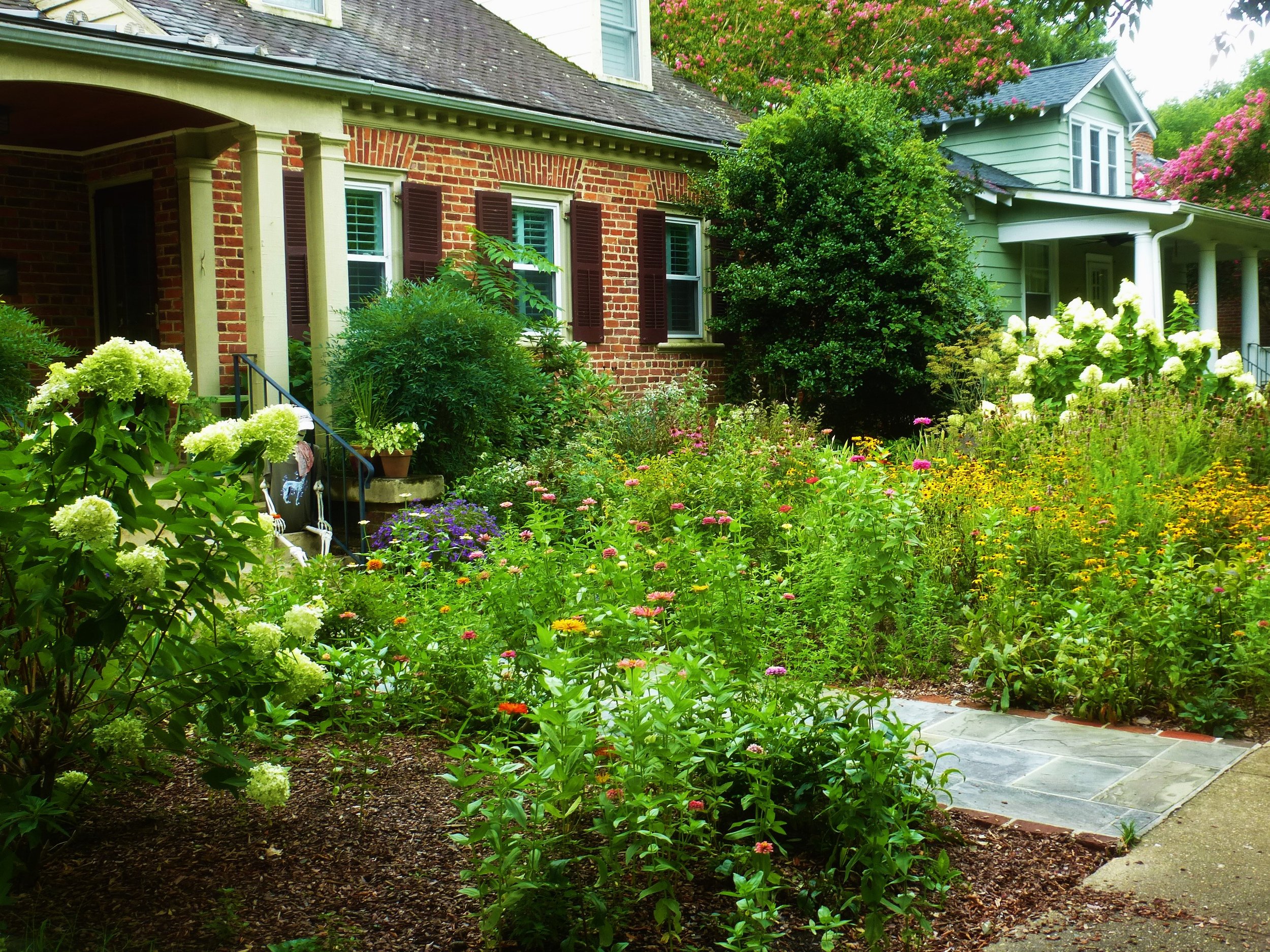Small Battles for the Planet: Choosing Biodiversity Over Conformity
by Charles McGuigan 08.2022
Biodiversity is good for the planet.
A couple years ago, I spoke with Catherine Farmer, who has been instrumental in the removal of invasive species and the reintroduction of native plants on Belle Isle. During the interview she handed me a book titled “Bringing Nature Home” which was written more than decade ago by Douglas Tallamy. “He’s the Rachel Carson for our generation,” Catherine said “We have so many acres of grasslands and the habitat is so fragmented now that we don’t have enough masses of uninterrupted habitat for species to exist, and we’re having a massive extinction.” The culprit here is the lawn.
In the enclosed side yard of a boyhood home on the Isle of Palms, I was lying on a bed of grass staring into a flawless blue sky. The only interruption to this field of vibrant blue was a single white cloud that moved leisurely to the east, heading toward the Atlantic. I breathed deeply of new-mown grass that was tinged with the pleasant sweetness of gasoline, and I could hear the sputtering of the lawnmower and the whirr of its blade. Even though I could not see him because my view was blocked by the wall that surrounded the yard, I knew my father was pushing that mower. For many years after that, the smell of freshly mown grass, or the sound of a lawnmower conjured that memory, which was always followed by a sense of security, as if all was right in the world.
All that has changed. Nowadays when I smell that mixture of gasoline and freshly-cut grass, and hear the belching and drone of a lawnmower, I am more apt to think of Apocalypse Now. Specifically that iconic scene when the Air Cavalry takes flight in a swarm of Huey Gunships, menacing birds of prey, their rotor blades churning the air thunderously. Then the obliteration of jungle foliage and human beings with jellied fire, and Lieutenant Colonel Bill Kilgore being moved by the smell of napalm, reminiscent of gasoline.
So much for fond memories.
Lush, emerald lawns cover over 40 million acres in the continental United States. That’s nearly fifty thousand square miles, roughly the size of New York state. It is the largest single crop in the country and has absolutely no food value. These uniform swards of green, whether they blanket golf courses or the yards of suburban homes, come at a dear cost to the environment.
In some states, turf grasses cover a large percentage of the ground. Ten percent of Delaware is devoted to lawns, and in Connecticut and Rhode Island, the number soars to twenty percent.
Lawns require fertilizer, which contributes to increased nitrogen levels in runoff water, and in far too many instances herbicides and pesticides are used for lawn maintenance, which eventually end up in the Chesapeake Bay watershed. And consider this: each day, according to the Environmental Protection Agency, nine billion gallons of fresh water are pissed away to keep an invasive species of grass ever-green.
Add to that, loss of habitat, and because manicured lawns do not flower, pollinators perish for lack of nectar. This, too: turf grass is a monoculture; there is no real biodiversity.
And though lawns do sequester carbon, they don’t do it nearly as well as a more biodiverse ground covering.
During the last recession, Richmond had a bumper crop of abandoned properties, and Chris Gough, an associate professor of biology at VCU who researches, among other things, ecosystem ecology, seized the moment. “We followed up by digging in the soils and quantifying the amount of carbon in the soils and how that changes over time after people leave,” Chris told me. “And so the take home from that was lawns that were abandoned for a longer period of time actually accumulated more carbon because there was a recovery, a return, back to the prior ecosystem that existed before it was grass. You eventually get woody species, trees, shrubs, bushes and so it appears that as that plays out over time after abandonment there’s this accumulation of carbon in the soil.”
More and more people are allowing nature to takes its course by introducing native plants into their yards, and letting the cultivated grasses die out. On the streets of Bellevue, many front yards are now blanketed with perennials, and in some cases, vegetables, along with native grasses and early spring ground covers. And they all look great, they look natural, and they celebrate their own diversity, unlike the boring conformity of a green lawn, which was just an invention of status created in Europe by the obscenely well-to-do—royals and such—and later imported into this country by the obscenely well-to-do.
“If every one of us little homeowners would bring back some natives, we could help restore habitats,” Catherine Farmer says. “We could bring back biodiversity.”
It is in the small engagements, the slightest of skirmishes, that the tides are sometimes turned so a war might be won.

